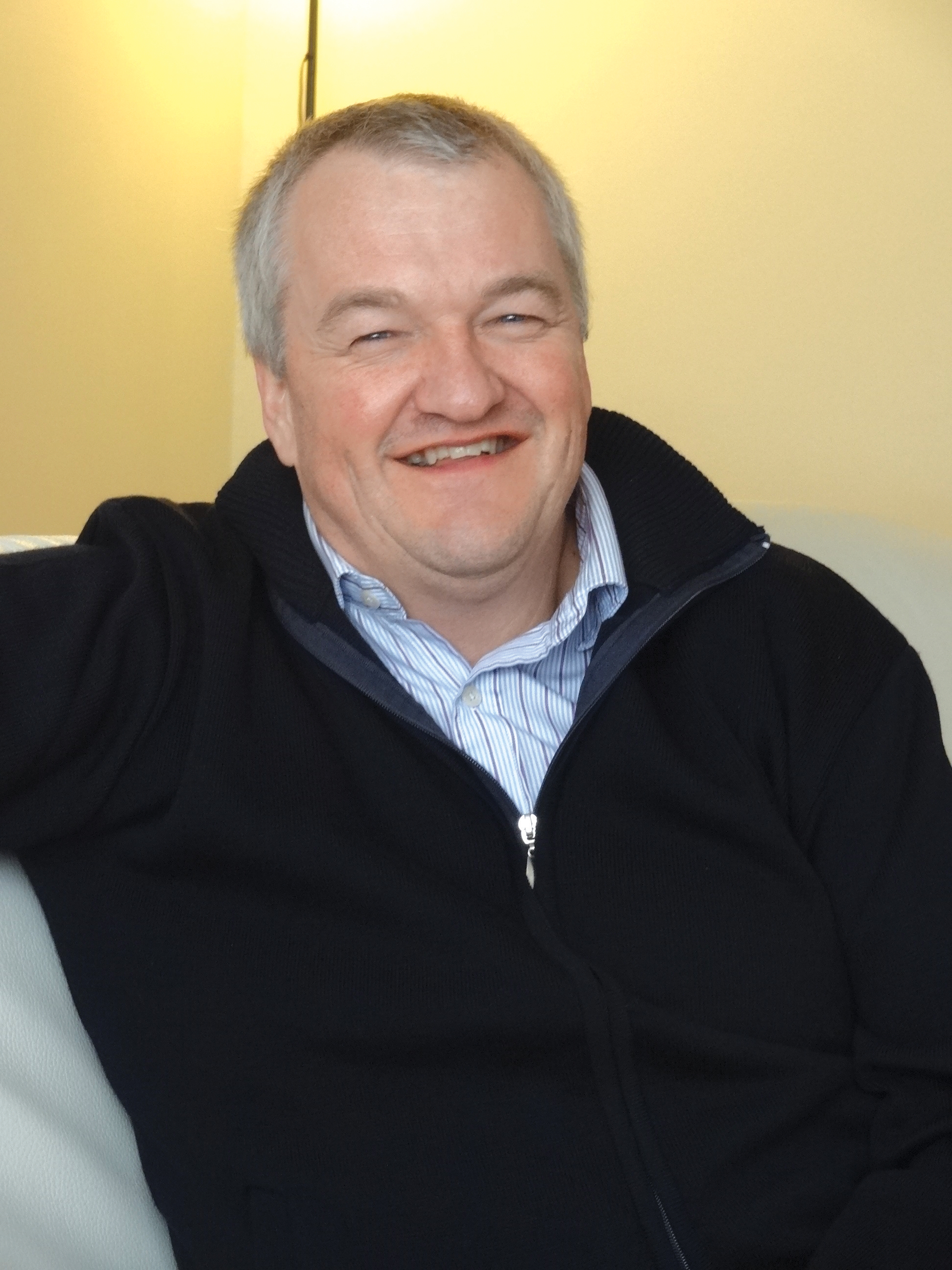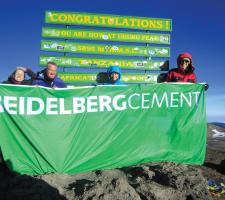
Obtaining the proper price for products is important to Barry Hudson and HeidelbergCement as Patrick Smith reports
Industry conferences often tend to debate policies and equipment, but pricing is a subject not often on the agenda. And Barry Hudson thinks the matter should be given more prominence, particularly at a time when all the major players in the aggregates industry are busy reducing debt and making savings.
“As an industry we need to focus on pricing as much as operations because it is such a big issue,” says Hudson who has just taken up a new post within
He is moving from offices in the Belgian capital Brussels, where he has been the director of the Competence Center Materials (CCM) TEAM area since November, 2008, to the Norwegian capital Oslo.
German-based HeidelbergCement is the global market leader in aggregates and is also prominent in the fields of cement, concrete and other downstream activities.
One of the world’s largest manufacturers of building materials, the company employs some 52,500 people at 2,500 locations in over 40 countries.
Hudson’s journey from his native New Zealand to his current position has seen him travelling the world, a world in which he is an acknowledged expert in aggregates and concrete, and where he has also put his knowledge to use developing an internet-based operation.
“I have always been in this industry,” says Hudson who lists tennis and skiing among his interests, and who has stood on the top of Mount Kilimanjaro in Tanzania, which at over 5,800m is Africa’s highest mountain. Much lower down the mountain, he helped rebuild a school, something he has also been involved with on another continent.
Born in Milton, New Zealand, half an hour’s drive south-west of the coastal city of Dunedin in Otago (South Island’s second largest city), Hudson joined the Ministry of Works after leaving Otago Boys’ High School.
“I worked in the materials testing laboratory in Dunedin and then moved on to become a concrete technician working on a concrete hydro-dam project for a German contractor in Clyde, also on South Island,” says Hudson.
A spell working on quality for Humes, an Auckland, New Zealand-based precast concrete company, was followed by the post of general manager with a local concrete roof tile company.
A move to Svedala [now part of
“I then moved to the USA where I helped carry out a joint research project with
Hudson then formed a joint venture company with Luck Stone - one of the largest family-owned and operated producers of crushed stone, sand and gravel in the US, he also formed a research company looking at value-added aggregates and the branding of aggregates called Aggregates Research Industries.
After a spell with
“Following this I moved to head up the new HeidelbergCement department in Brussels, looking at operations for the TEAM area,” says Hudson.
The TEAM area is one of four global areas and covers Northern Europe, Baltics, Benelux and the UK, the Mediterranean basin (Spain, Israel and Turkey) and Africa.
The others are CECA (Central Europe, Central Asia); Asia/Oceania, which includes Australia, Indonesia and Malaysia, and North America (USA and Canada).
“Each area has its own CCM and they are charged with helping the business units achieve operational excellence. Out of the TEAM area we developed and piloted ways of optimising quarry efficiency and looking at getting €50cents/tonne operating efficiency on average across all of our aggregate products.
“This involves going in and doing studies on the quarries and making them more efficient; making sure they have got the right equipment; making sure they are doing things in a logical way.
“We developed, piloted and implemented that in TEAM and it became a global project for us and it has been successful at getting €50cents/tonne of improvements across the board. We are targeting €35 million of traceable improvements.”
Meanwhile, as part of a well-publicised CCM TEAM effort, Hudson, along with Tatiana de Lamalle and other department employees, put together a special project to raise funds to rebuild classrooms at Kighare Secondary School in Mwanga, in the Kilimanjaro region of Tanzania.
In collaboration with Twiga Cement distributor, Joram General Enterprises and Tanzania Portland Cement Company, in September 2012 they handed over two classrooms to the school management of Kighare Secondary School in Mwanga, after they had rebuilt them. The classrooms had been totally washed away by floods, leaving hundreds of students and the surrounding community empty-handed.
Cash was also raised to extend the school by adding ten pit latrines and new science laboratories.
The project will cost €70,000, raised by the CCM from various donors in Europe, including corporate entities and individuals.
“During the visit, we were impressed by the community support for the school, the passion of the school management, and the clear vision for not only rebuilding the damaged classrooms, but the foresight to extend the resources of the school to include a new toilet block and two new science laboratories,” says Hudson, who is also on the board of an organisation called the Global Centre for Education, which raises funds and which is currently building its third school in Nepal.
Meanwhile, as he plans the move to Oslo (as we talk the winter temperature is -23ºC) they are still producing aggregates in Norway.
“Another thing we did at TEAM CCM; we realised when doing the quarry optimisation work that there could be better ways to price our aggregate products.
“The common method of allocating costs to aggregates is misleading so we developed a tool called Production for Profit (P4P), a methodology of assigning operating costs to individual products so we knew how much it was costing to make any given product. This approach lets us know whether we are making a loss or a profit. P4P more accurately assigned costs to products. This is something relatively new to the industry.
“The quarry optimisation product is called CLIMB, and the pricing initiative is called CLIMB Higher, and the target of that is also to increase revenues by €50c/tonne. So between CLIMB and CLIMB Higher the target is to increase our margins by €1/tonne, which is a lot.”
Hudson’s new job involves working all around the North Sea, and one of the things he will be doing is working on exports to the UK looking at commercial issues, and in Continental Europe.
“I will look after aggregates positions in Norway and Sweden and the Baltics, and operationally our joint venture, and this includes our big super quarry at Jelsa [south-west Norway], one of the biggest quarries in Europe. It has changed a bit in the last few years: we have spent €150 million on it.
“One of the big tasks I have for Northern Europe is to improve our pricing.”
As director of aggregates for Northern Europe, he is responsible for about 25 million tonnes of aggregates.
As well as Jelsa in Norway there is Nortsone, along with Jehander in Sweden and Garkalnes in the Baltics.
“One of the issues we faced in the TEAM area is that with the downturn and the crisis we have a huge amount of over capacity for aggregates production and part of my job is to strategically look at how we satisfy the market for extra profitability. Part of that is to work out what to do with our excess capacity where everybody else has excess capacity as well. And also to put some discipline into pricing.
“As an industry our prices over history don’t even keep up with inflation, so if that’s the case over a period of time the industry is not sustainable from a commercial perspective.
“One of my big tasks is to put some discipline into pricing and what I tell everybody is that I want our commercial staff to know when to say ‘no’.
“We have got to be careful when we start giving those messages but it is a nice message to put out to the marketplace because we are not saying anything commercially sensitive. We are saying we realise pricing needs to be improved. We cannot do it on our own. All the companies need to do it at the same time or all the efforts are in vain.
“We started a pricing initiative in Northern Europe, and to date the initiative has been successful, but with anything, time will be the real test.
“We are putting some methodologies in place so prices reflect the value of our products,” says Hudson who wants to see more discussion on pricing matters.
“When people look at the business, if you ever go to a conference or seminar or there is an article it is always on the operational side and people don’t tend to look at the commercial side and that is where the money is.
“We have been doing the pricing for a year in Northern Europe and they have stuck.
“The nice thing is we are not the major player in this region, and the industry realises that price rises need to at least match inflation or some other inflation index. Outside work he is also co-authoring a popular industry book, Concrete Mix Design, Quality Control and Specification, written by concrete technology expert Ken Day.
“Ken has had three editions of the book and for the fourth and final edition I am co-author along with James Aldred, who is involved with quality control on the Burj in Dubai. It should be published any time now.”
Day said: “My respect for his knowledge and ability is such that I have invited him to be a co-author of the final edition of my textbook. I need not say more.”
Hudson was also one of the members of a four-person HeilderbergCement team that climbed Mount Kilimanjaro in September 2012 while visiting Kighare Secondary School. Along with Tatiana de Lamalle, Julia Georgi and Neil Wells. he reached the peak where they waved a company flag.
“Climbing is not a hobby of mine and never will be. One and done I think. But it was a good thing to achieve and was tremendous fun.”











